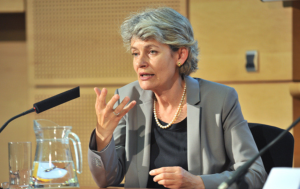Social Innovation is about delivering life-changing outcomes for society and individuals. Yet to do so successfully, technologies must converge with industries, products and new business models. Moreover, companies know that innovation is vastly more effective when it results from collaboration with governments, charities and academic institutes.
The energy sector is perhaps better placed than any other to benefit from Social Innovation. The need for greener energy, and the rising demand among consumers to assert greater control over their own energy usage, provides opportunities for technological advancements and business model innovations to drive much needed changes.
The upshot will be significant: better resource use, the provision of safe, secure, reliable and clean power to homes and businesses, and knock-on effects for communities and the wider society. And these are the ends towards which Hitachi’s Social Innovation programme is working.
The global energy challenge
The energy spectrum can be divided into four main components, each with its own unique challenges, and its own unique opportunities for innovation: power generation, transmission, distribution, and consumption.
Power generation
Over the coming two decades, energy demand will grow by 30 percent[1]. That means a significant rise in C02 emissions, to nearly 40 billion metric tonnes from current rates of 34 billion[2].
Rising demand means the need to find alternative sources becomes all the more pressing. De-carbonisation initiatives, renewable energies, new business models and utility-scale storage are all areas in which social innovation can play a major transformative role.
Micro-generation facilities, such as small-scale wind turbines, are being built in energy-deprived areas, provide for new and more efficient means of generating power.
Transmission
In mature economies, 5-10 percent of energy is lost in transmission. In emerging economies, that figure reaches 30 percent[3]. The wastage is enormous.
But innovations aimed at countering this are already being rolled out: Smart grids, HVDC (high-voltage direct current), grid stability and power electronics and control are among the key developments in this area while micro-generation allows on a local scale reduces the need for transmission.
Distribution
More than 1.1 billion people, or nearly one-sixth of the world’s population, lack access to electricity, while many more suffer from poor quality supply[4].
New advancements in technology however mean that these numbers are dropping. Better distribution management through digital technology, together with localised micro-grids allow for more efficient distribution of energy.
Consumption
Consumption of energy increases with a growing population, and as resources dwindle, so prices rise. This makes for a worrying outlook, but also emphasises the need for a new direction in energy generation and use.
Smart buildings, electric vehicles and less wasteful battery storage are all areas in which innovation is driving much needed change. Smart meters display the cost of consumption very visibly to consumers and help drive behaviour towards reduced consumption.
Improvement in how we generate and use our energy resources will only come when modern energy infrastructure combines with advanced IT solutions. It is this convergence, central to Social Innovation strategies, that can give birth to new business models that have the customer as their central focus.
Global innovation hotspots
Social Innovation works most effectively where demand for change meets the capacity to innovate. A number of sub-sectors of the energy industry will see substantial shifts over the coming years, including: the better management of emissions and air pollution; access to electricity for remote or developing communities; and connected solutions for homeowners to proactively manage their energy more efficiently.
But we can also pick out nine geographical regions where Social Innovation in energy is most needed, and where we are likely to see the clearest evidence of a revolution underway in the energy sector.
- North America: The USA will lead the smart grid market over the next 5 years, as well as leading in “demand response” — a means for consumers to shift their usage during peak periods and thereby save money and energy.
- Brazil: Blackouts are still commonplace in many remote parts of Brazil, but recent off-shore discoveries will provide ample opportunity to increase energy independence.
- Europe: The EU is proposing a 40 percent cut in greenhouse gas emissions on 1990 levels for 2030. Performance-contracting for energy management is growing at more than 10 percent per year[5]. The need to replace old energy infrastructure offers an opening for innovation in alternative energy generation and the means by which it is distributed.
- Turkey: With electricity demand increasing by 7 percent each year up to 2020, the need to increase capacity has been pressing.[6]
- Africa: Traditional biomass fuels are still the main source of energy for cooking for around 600 million people in Africa, while around half a billion people have no access to electricity. It is here that innovative methods for exploiting renewable energies can be most effective.
- China: Energy demand growth is set to remain above five percent for the foreseeable future. China will continue to be the fastest growing market for renewable energy beyond 2020.
- India: India has been a hotspot for Smart Cities, with 21 set to be built by 2020. With a rapidly urbanising population and the problems of water stress and sanitation that come with it, Social Innovation will prove essential.
- Asia: As demand has grown, electrification rates in Asia have reached 90 percent, thereby bringing power to communities that have long been kept in the dark[7].
- Australia: Solar energy is on the up, and oil and coal is on the wane. Australia is a success story for Social Innovation, with the country on target to reach 22 percent renewable energy by 2020[8].
It is clear that the demand for more efficient and more sustainable energy is rising. The shift to customer-centric business models reflects a growing desire among end-users for control over how they use energy, and what impact it has on the environment and society around them.
Each sub-sector of the industry is undergoing rapid change, and already we are seeing the benefits of this worldwide—from electrification in East Asia to the growth of Smart Cities in India and beyond.
Ideas are not bound by borders, and Social Innovation, with its emphasis on convergence, collaboration and new thinking, is becoming part of the global conversation.
This article originally appeared in Business Reporter.
[1] https://sputniknews.com/business/201711141059080260-global-energy-demand-report/
[2] https://www.statista.com/statistics/263980/forecast-of-global-carbon-dioxide-emissions/
[4] https://www.iea.org/energyaccess/database/
[5] https://ec.europa.eu/energy/en/topics/energy-strategy-and-energy-union/2030-energy-strategy
[6] https://ec.europa.eu/energy/en/topics/energy-strategy-and-energy-union/2030-energy-strategy





